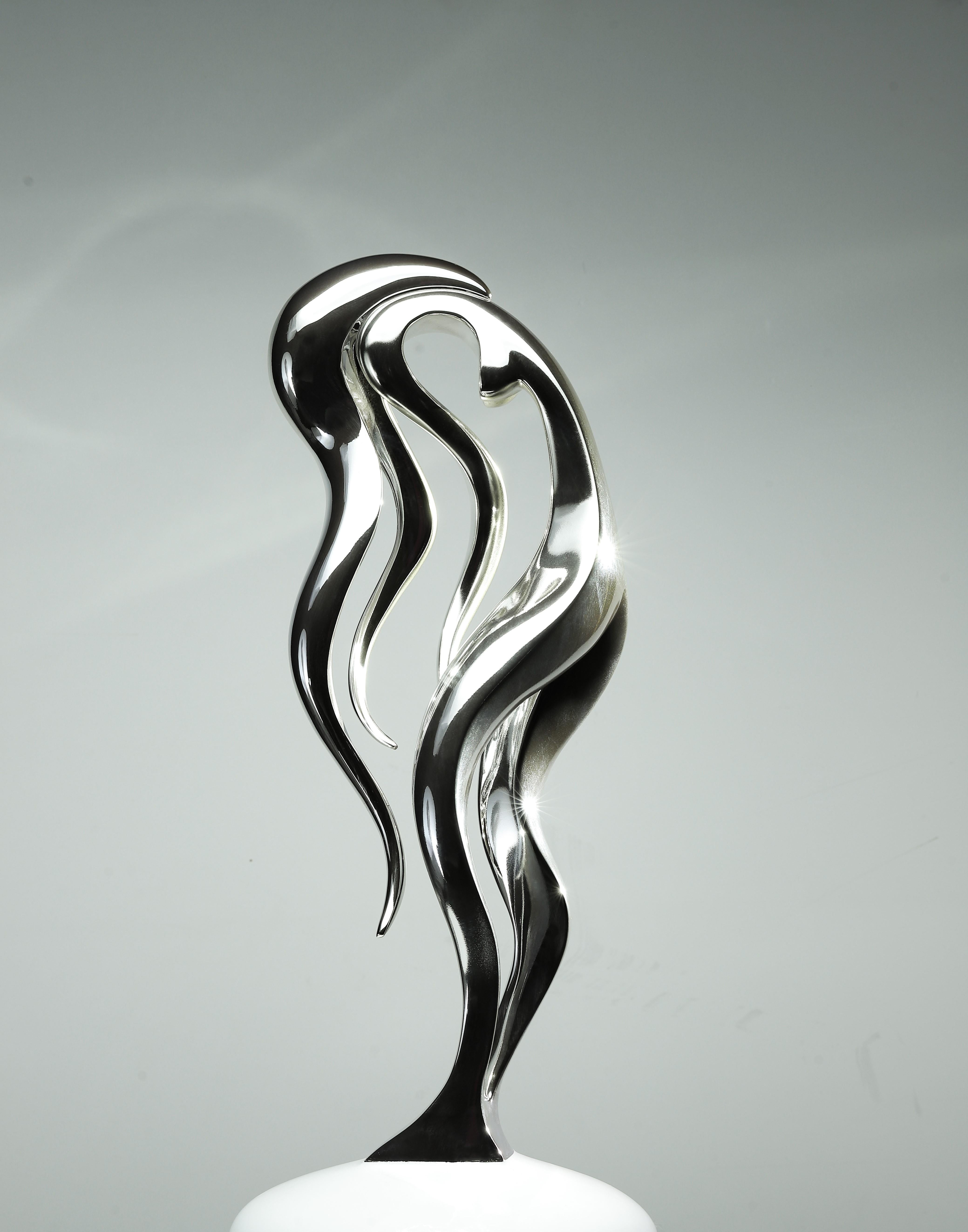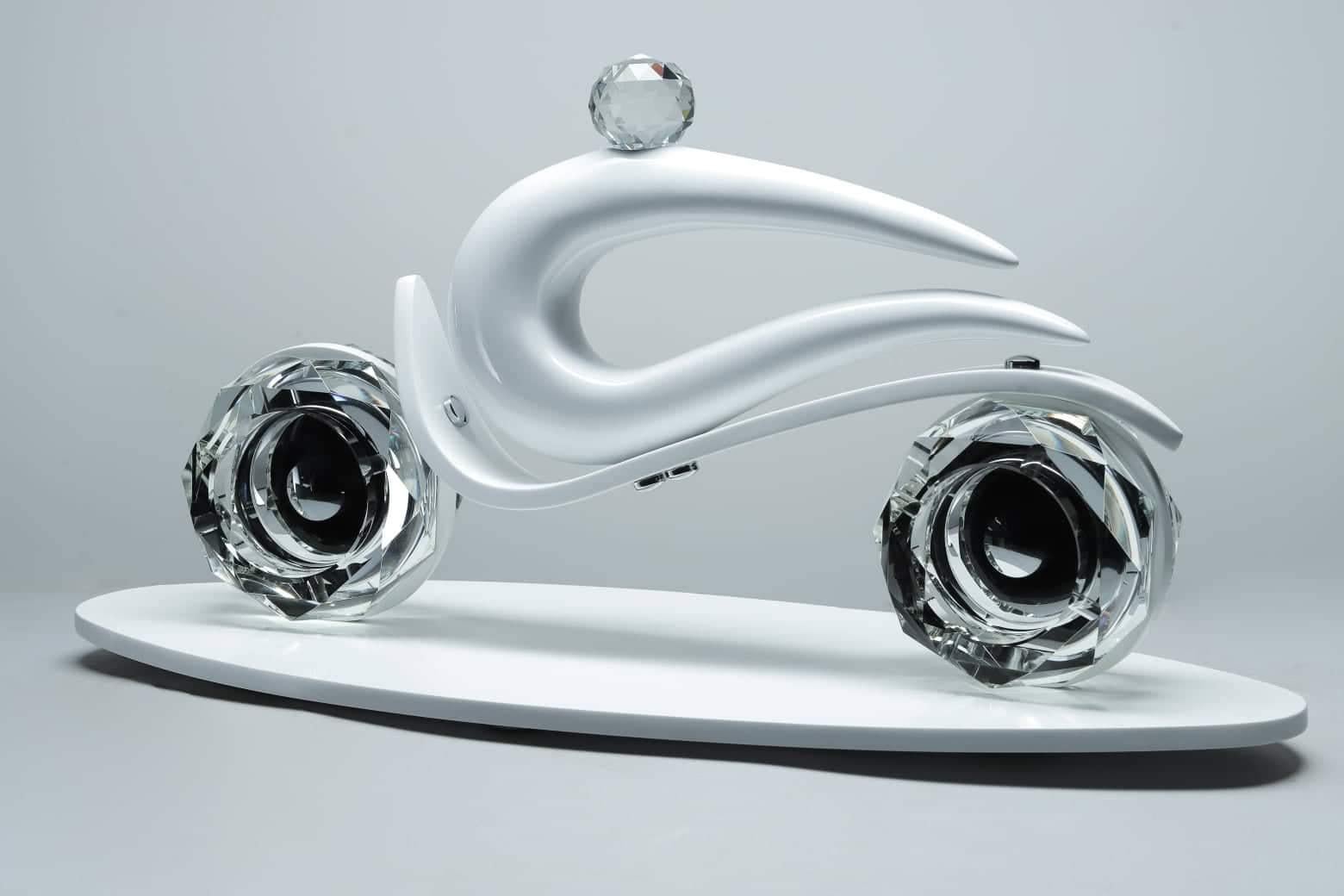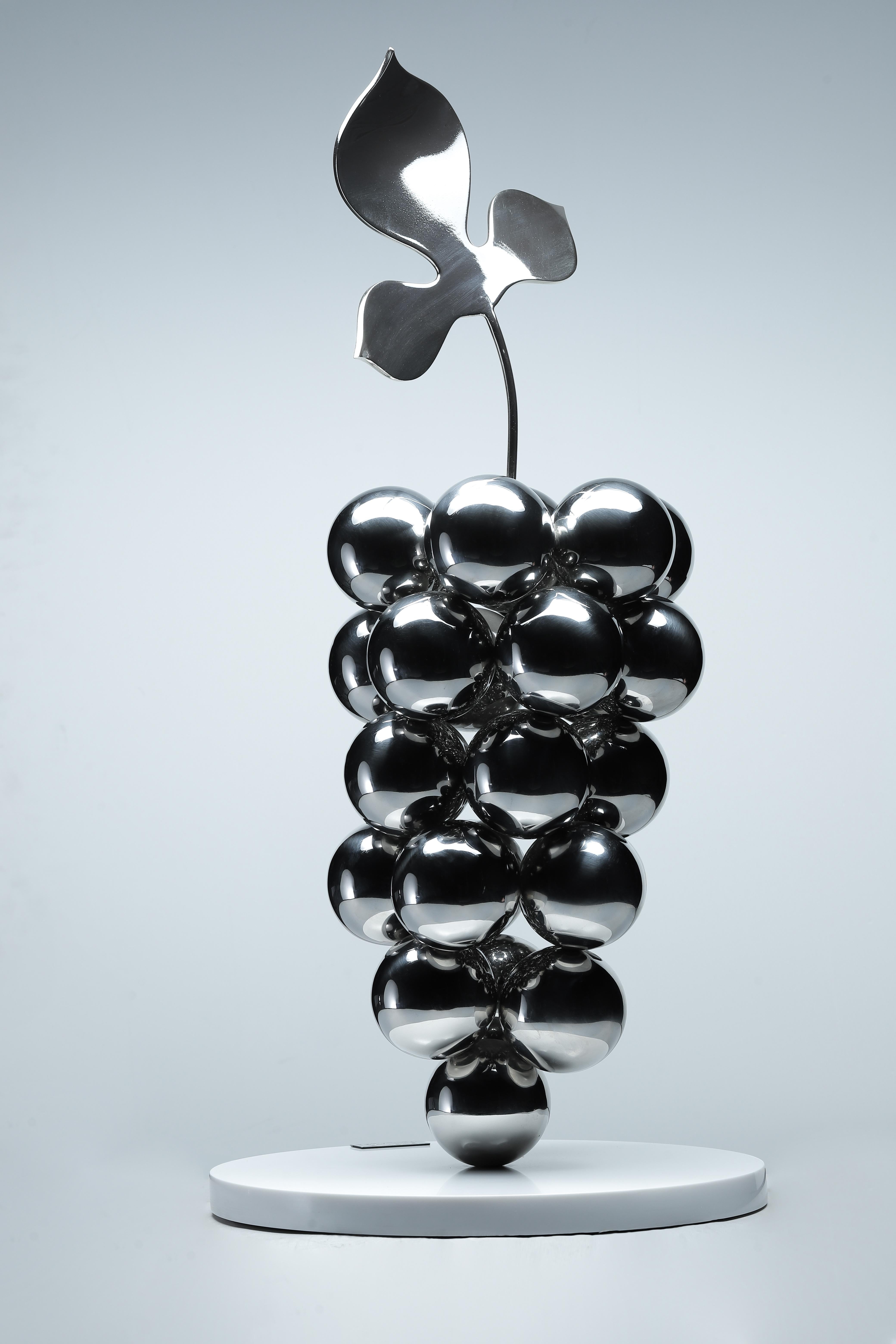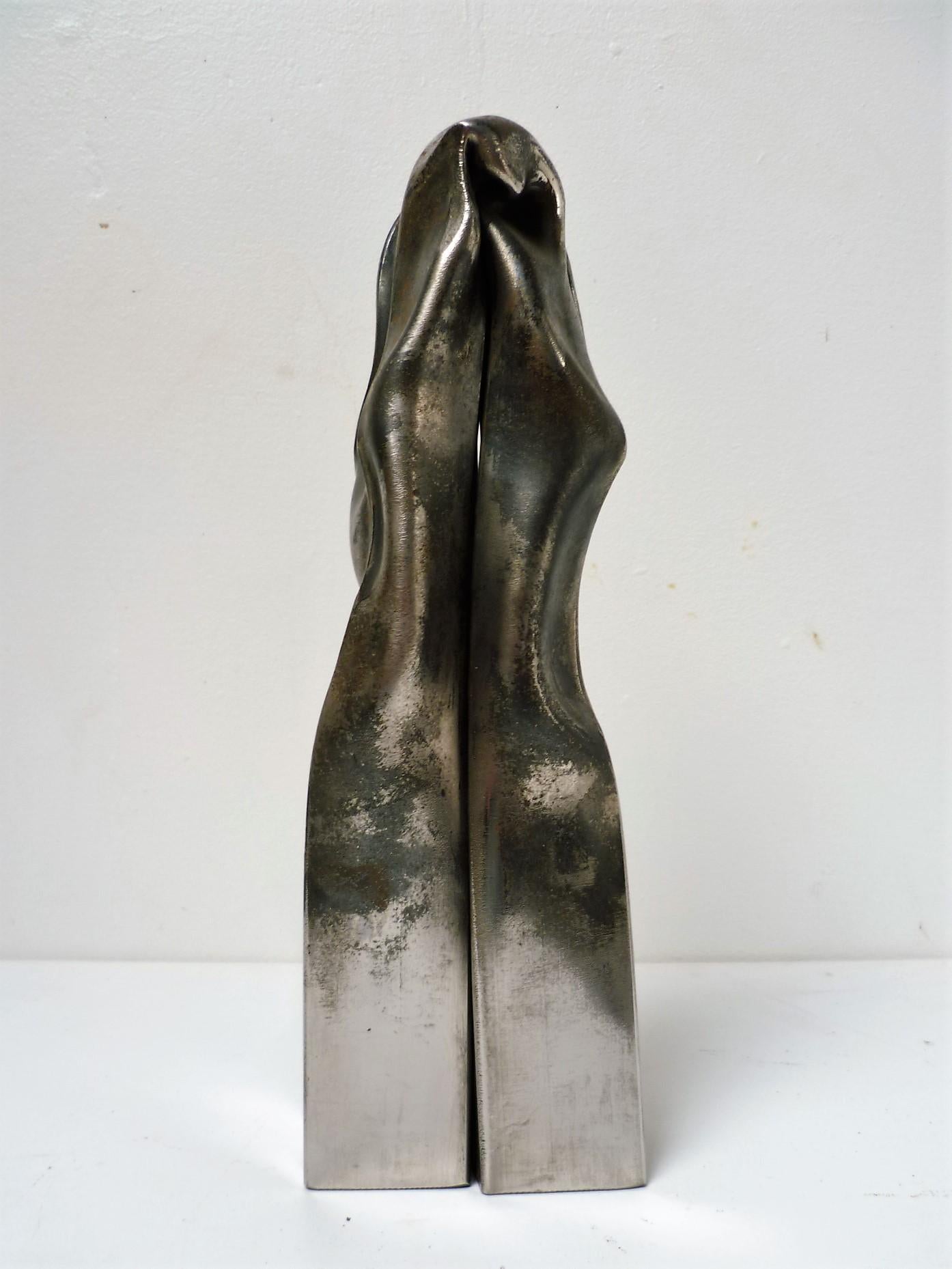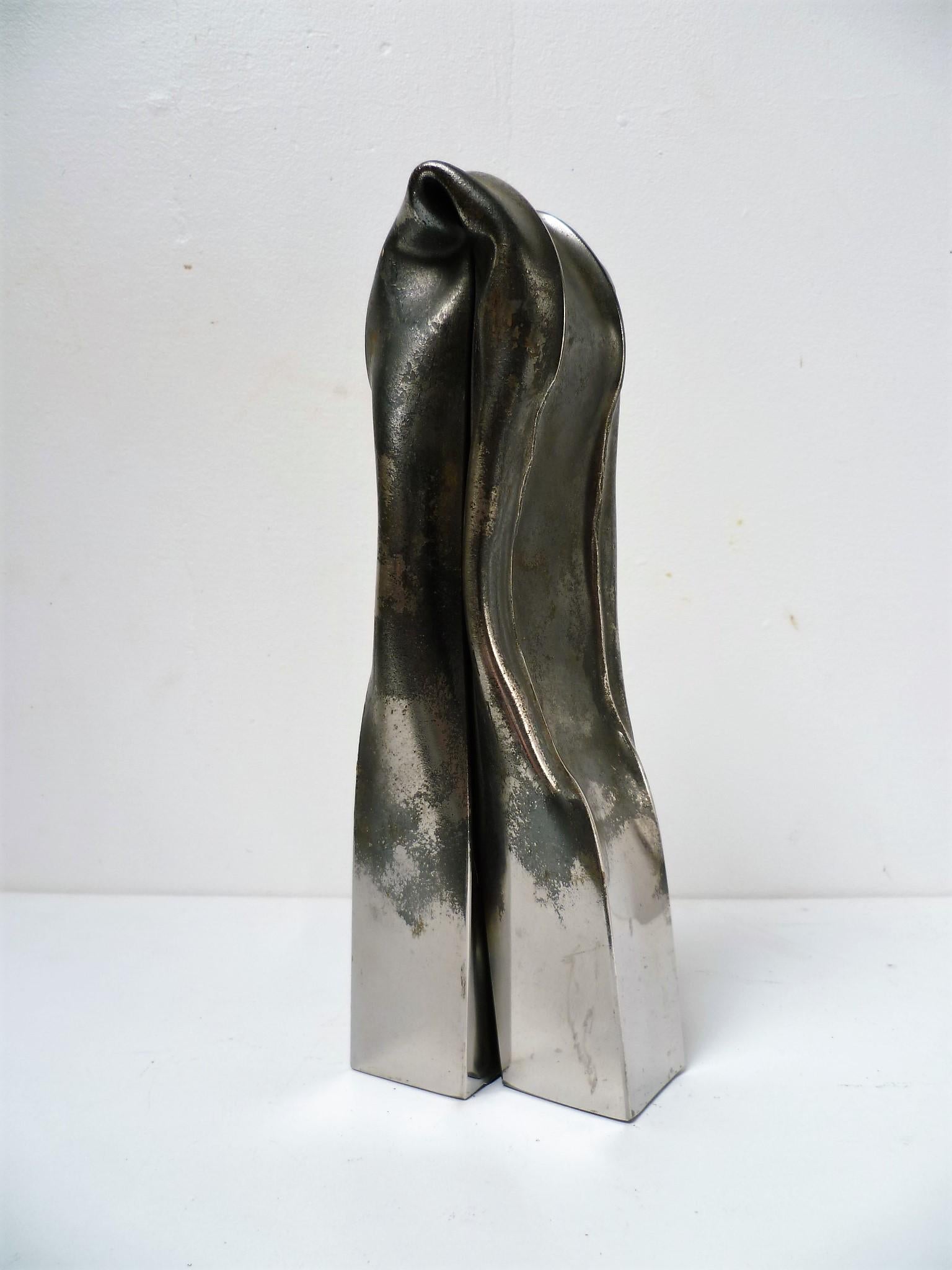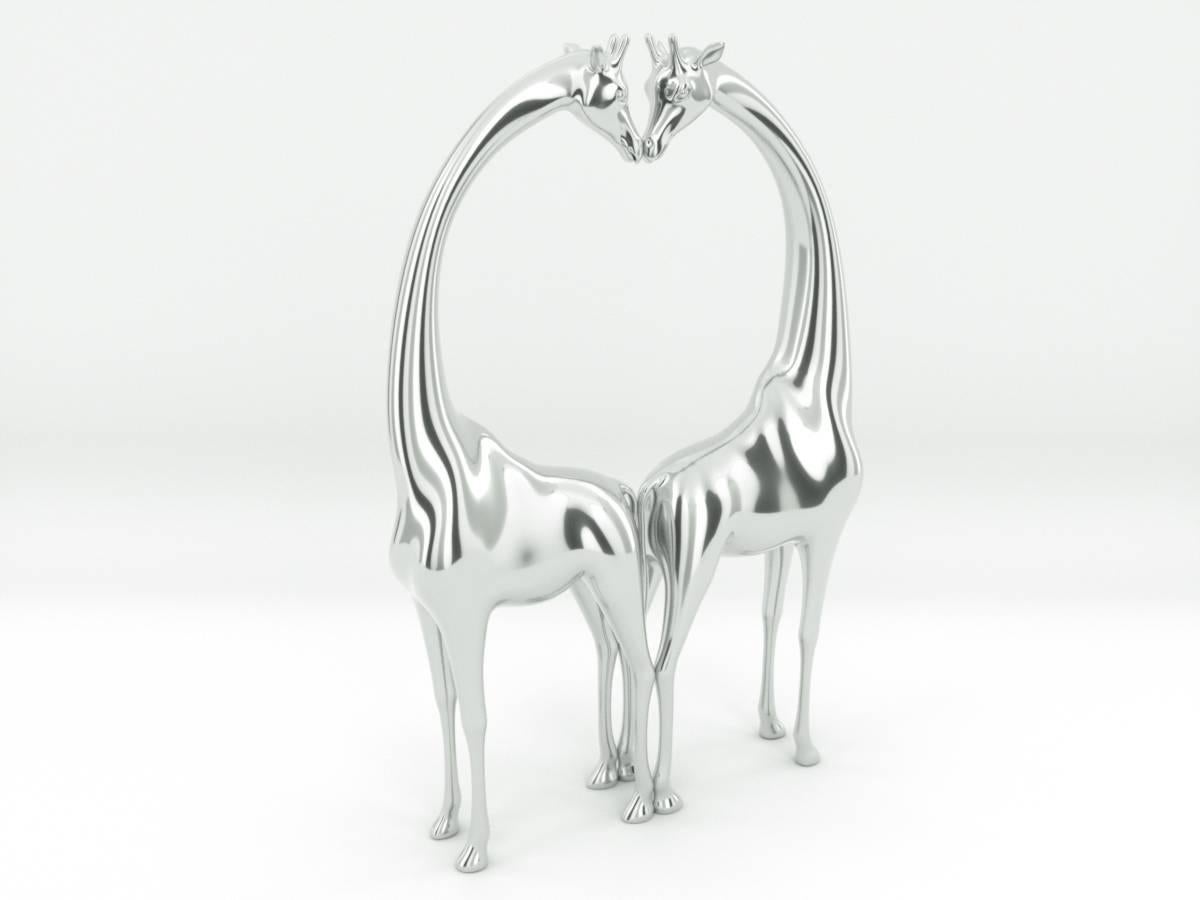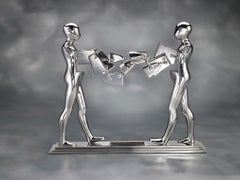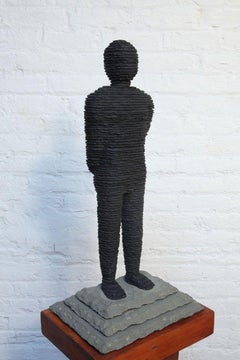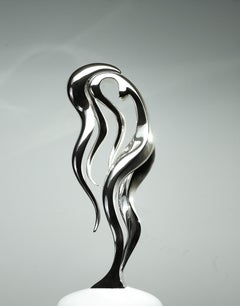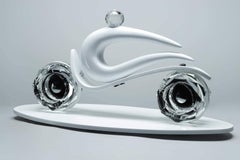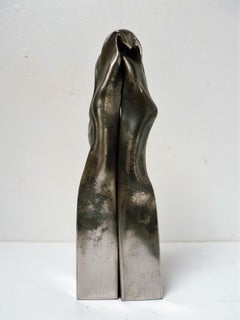Items Similar to Flowing Man
Want more images or videos?
Request additional images or videos from the seller
1 of 2
Ernest TrovaFlowing Man1972
1972
About the Item
Edition 37/99
- Creator:Ernest Trova (1927 - 2009, American)
- Creation Year:1972
- Dimensions:Height: 6.75 in (17.15 cm)Width: 19.5 in (49.53 cm)Depth: 3.5 in (8.89 cm)
- Medium:
- Movement & Style:
- Period:
- Condition:
- Gallery Location:Boca Raton, FL
- Reference Number:1stDibs: LU135426106942
Ernest Trova
In the early 1960s, St. Louis Sculptor Ernest Trova—who was entirely self-taught—began developing his pivotal theme of Falling Man, a stark and startling image that combines references to classical sculpture with an industrial aesthetic. In his Profile Canto series, Falling Man—depicted as an androgynous, mechanical figure—is folded and segmented as to be nearly undetectable amid the various geometric forms that comprise these works.
About the Seller
5.0
Recognized Seller
These prestigious sellers are industry leaders and represent the highest echelon for item quality and design.
Established in 1989
1stDibs seller since 2020
22 sales on 1stDibs
Typical response time: 6 hours
- ShippingRetrieving quote...Shipping from: Boca Raton, FL
- Return Policy
Authenticity Guarantee
In the unlikely event there’s an issue with an item’s authenticity, contact us within 1 year for a full refund. DetailsMoney-Back Guarantee
If your item is not as described, is damaged in transit, or does not arrive, contact us within 7 days for a full refund. Details24-Hour Cancellation
You have a 24-hour grace period in which to reconsider your purchase, with no questions asked.Vetted Professional Sellers
Our world-class sellers must adhere to strict standards for service and quality, maintaining the integrity of our listings.Price-Match Guarantee
If you find that a seller listed the same item for a lower price elsewhere, we’ll match it.Trusted Global Delivery
Our best-in-class carrier network provides specialized shipping options worldwide, including custom delivery.More From This Seller
View AllDouble Flapman
By Ernest Trova
Located in Boca Raton, FL
AP 2
Ernest Trova was an artist whose signature creation, a gleaming humanoid known as “Falling Man,” appeared in a series of sculptures and paintings and became a symbol of an imperfect humanity hurtling into the future. Mr. Trova was largely known as a sculptor, but his “Falling Man,” a standard of Pop Art, began life as a painted figure, taking shape on his easel in the early 1960s. Faceless, armless, with a hint of a belly and, its name notwithstanding, of indeterminate sex, the figure struck a variety of poses, sometimes juxtaposed with other like figures, sometimes with mechanical appendages.
In October 1963 his one-man show, “Falling Man Paintings,” was the inaugural exhibition of the Pace Gallery on West 57th Street in Manhattan; it sold out, with the works purchased by the Museum of Modern Art, the Whitney Museum, the architect Philip Johnson and others. In three dimensions, the “Falling Man” figure was made from different materials over the years — nickel and chrome-plated bronze, enamel on aluminum, stainless steel — and often, like the Oscar statuette, was polished to an industrial sheen. It was clearly a space age creation, a forerunner of C3PO, the golden robot in “Star Wars.”
“He found the space age both inspiring and dehumanizing,” Arne Glimcher, who founded the Pace Gallery, now PaceWildenstein, said in an interview on Friday. By the end of the 1960s, “Falling Man” had become Mr. Trova’s trademark, provoking Hilton Kramer, the art critic of The New York Times, to write that Mr. Trova had subjected his favorite figure “to almost as many variations as the Kama Sutra describes for the act of love.”
Ernest Tino Trova Jr. was born in St. Louis on Feb. 19, 1927. Shortly after his high school graduation his father, an industrial tool designer and inventor, died, and young Ernie, as he was known, went to work, most significantly as a window dresser for a department store. His early paintings were in the Abstract Expressionist mode, but his attentiveness to the mannequins had an influence on his art. Through the 1970s and 1980s he continued with “Falling Man,” though he also became interested in formalized, almost mechanical-seeming landscapes, and the figures began to appear, reduced in size, within the context of abstractly rendered gardens.
A self-taught artist with an impish wit and an eccentric turn of mind, Mr. Trova craved the recognition that was available to artists only in New York City, but he never visited for more than a week at a time and made almost no friends among New York artists. He did befriend Ezra Pound. As a fevered fan of Julio Iglesias...
Category
20th Century Contemporary Figurative Sculptures
Materials
Stainless Steel
Double Walking Figure
By Ernest Trova
Located in Boca Raton, FL
rnest Trova was an artist whose signature creation, a gleaming humanoid known as “Falling Man,” appeared in a series of sculptures and paintings and became a symbol of an imperfect humanity hurtling into the future. Mr. Trova was largely known as a sculptor, but his “Falling Man,” a standard of Pop Art, began life as a painted figure, taking shape on his easel in the early 1960s. Faceless, armless, with a hint of a belly and, its name notwithstanding, of indeterminate sex, the figure struck a variety of poses, sometimes juxtaposed with other like figures, sometimes with mechanical appendages.
In October 1963 his one-man show, “Falling Man Paintings,” was the inaugural exhibition of the Pace Gallery on West 57th Street in Manhattan; it sold out, with the works purchased by the Museum of Modern Art, the Whitney Museum, the architect Philip Johnson and others. In three dimensions, the “Falling Man” figure was made from different materials over the years — nickel and chrome-plated bronze, enamel on aluminum, stainless steel — and often, like the Oscar statuette, was polished to an industrial sheen. It was clearly a space age creation, a forerunner of C3PO, the golden robot in “Star Wars.”
“He found the space age both inspiring and dehumanizing,” Arne Glimcher, who founded the Pace Gallery, now PaceWildenstein, said in an interview on Friday. By the end of the 1960s, “Falling Man” had become Mr. Trova’s trademark, provoking Hilton Kramer, the art critic of The New York Times, to write that Mr. Trova had subjected his favorite figure “to almost as many variations as the Kama Sutra describes for the act of love.”
Ernest Tino Trova Jr. was born in St. Louis on Feb. 19, 1927. Shortly after his high school graduation his father, an industrial tool designer and inventor, died, and young Ernie, as he was known, went to work, most significantly as a window dresser for a department store. His early paintings were in the Abstract Expressionist mode, but his attentiveness to the mannequins had an influence on his art. Through the 1970s and 1980s he continued with “Falling Man,” though he also became interested in formalized, almost mechanical-seeming landscapes, and the figures began to appear, reduced in size, within the context of abstractly rendered gardens.
A self-taught artist with an impish wit and an eccentric turn of mind, Mr. Trova craved the recognition that was available to artists only in New York City, but he never visited for more than a week at a time and made almost no friends among New York artists. He did befriend Ezra Pound. As a fevered fan of Julio Iglesias, he went to the singer’s concerts all over the United States. “Ernie had a fabulous fantasy life,” Richard Solomon, the president of Pace Prints, the publishing arm of PaceWildenstein, said in an interview. “He had a persona he used to hide behind that he called ‘Junior Person.’ He was a wonderful man, but an oddball to beat the band.”
Mr. Trova left the Pace Gallery in the mid-1980s and signed with an inexperienced dealer in St. Louis. His profile went into decline, except in his hometown, where his donation of many of his works helped create the Laumeier Sculpture Park. He continued to work until shortly before his death. Most recently he was making collages using magazine...
Category
20th Century Figurative Sculptures
Materials
Stainless Steel
Brandi
By Curt Brill
Located in Boca Raton, FL
"My search in the visual arts is for the hidden Human spirit. That small part that makes us each unique, yet finds us a common home. I have been a paid professional as well as an active volunteer in state run mental institutions, private and county run nursing homes and been a drug rehabilitation counselor. Overriding this vein is the love of movement and dance and the shear...
Category
21st Century and Contemporary Contemporary Figurative Sculptures
Materials
Bronze
$85,000
Uzziyya
By Boaz Vaadia
Located in Boca Raton, FL
This sculpture is edition 2/7, cast posthumously by the Boaz Vaadia Estate.
Category
21st Century and Contemporary Contemporary Figurative Sculptures
Materials
Bluestone, Bronze
$34,000
Running Horse
By Wendy Klemperer
Located in Boca Raton, FL
The imagery that pervades my work reflects a lifelong fascination with animals. As a child this led to hours of watching, drawing, and imagining. When I began making sculpture as an ...
Category
21st Century and Contemporary Contemporary Figurative Sculptures
Materials
Steel
Hattush
By Boaz Vaadia
Located in Boca Raton, FL
This small, pedestal sized or table top sculpture by Israeli artist, Boaz Vaaida is a rare find. Very few small works, such as this are available. Cast in bronze from an original s...
Category
21st Century and Contemporary Contemporary Figurative Sculptures
Materials
Bluestone, Bronze
$29,900
You May Also Like
Georgian Contemporary Sculpture by Erekle Tsuladze - Angel
Located in Paris, IDF
Artificial stone & stainless steel
Category
2010s Contemporary Figurative Sculptures
Materials
Stone, Stainless Steel
Georgian Contemporary Sculpture by Erekle Tsuladze - Walk
Located in Paris, IDF
Artificial stone & stainless steel
Category
2010s Contemporary Figurative Sculptures
Materials
Stone, Stainless Steel
Georgian Contemporary Sculpture by Erekle Tsuladze - The Grape
Located in Paris, IDF
Artificial stone & stainless steel
Category
2010s Contemporary Figurative Sculptures
Materials
Stone, Stainless Steel
$4,224 Sale Price
53% Off
French Contemporary Art by Frédérick Mazoir - Magmatisme 07
Located in Paris, IDF
Forged stainless steel
Category
2010s Contemporary Figurative Sculptures
Materials
Stainless Steel
French Contemporary Art by Frédérick Mazoir - Magmatisme 06
Located in Paris, IDF
Forged stainless steel
Category
2010s Contemporary Figurative Sculptures
Materials
Stainless Steel
Love Giraffe
By Michael Benisty
Located in New York, NY
The electro-love collection was inspired by the artist time spent in South America and South Africa and seeing these super natural creatures.
Technique: Clay mold...
Category
2010s Contemporary Figurative Sculptures
Materials
Stainless Steel
